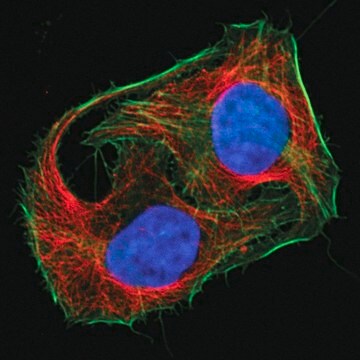38371
Atto 488 Protein Labeling Kit
BioReagent, suitable for fluorescence
About This Item
Produtos recomendados
linha de produto
BioReagent
fabricante/nome comercial
ATTO-TEC GmbH
fluorescência
λex 488 nm; λem 520 nm in 0.1 M phosphate buffer, pH 7.0 (recommended)
adequação
suitable for fluorescence
temperatura de armazenamento
2-8°C
Procurando produtos similares? Visita Guia de comparação de produtos
Categorias relacionadas
Descrição geral
Aplicação
Informações legais
Código de classe de armazenamento
10 - Combustible liquids
Classe de risco de água (WGK)
WGK 3
Ponto de fulgor (°F)
Not applicable
Ponto de fulgor (°C)
Not applicable
Certificados de análise (COA)
Busque Certificados de análise (COA) digitando o Número do Lote do produto. Os números de lote e remessa podem ser encontrados no rótulo de um produto após a palavra “Lot” ou “Batch”.
Já possui este produto?
Encontre a documentação dos produtos que você adquiriu recentemente na biblioteca de documentos.
Os clientes também visualizaram
Artigos
We offer protein labeling kits based on two types of fluorescent dyes, the Atto dyes and the Tracy dyes. Both series of kits provide an easy and reliable way to fluorescently label purified proteins, enzymes, and antibodies.
Nossa equipe de cientistas tem experiência em todas as áreas de pesquisa, incluindo Life Sciences, ciência de materiais, síntese química, cromatografia, química analítica e muitas outras.
Entre em contato com a assistência técnica





